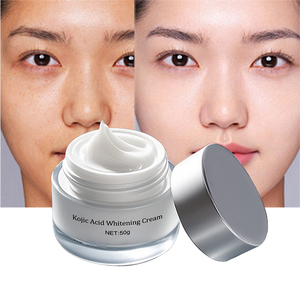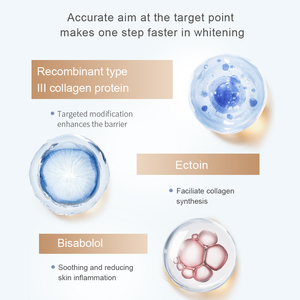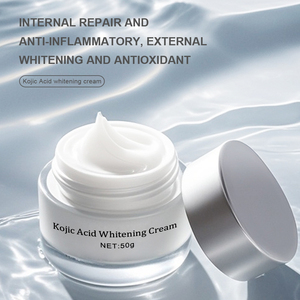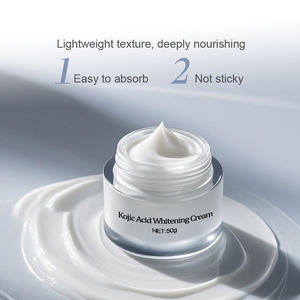
All categories
Featured selections
Trade Assurance
Buyer Central
Help Center
Get the app
Become a supplier

(855 products available)



































 Ready to Ship
Ready to Ship


















Market Size: The global face cream market is projected to grow from $16.23 billion in 2023 to $17.88 billion in 2024, with a robust compound annual growth rate (CAGR) of 10.1% expected through 2028. This growth is largely driven by increasing consumer awareness of skincare, the demand for natural ingredients, and the rising influence of e-commerce. Notably, the incorporation of specialty ingredients like licorice, known for its soothing and brightening properties, is becoming increasingly popular among consumers seeking effective skincare solutions.
Consumer Insights: The target demographic for licorice face cream primarily includes women aged 25-55, who are increasingly prioritized by brands for their skincare routines. Key purchasing drivers include the efficacy of the product, the quality of ingredients, and certifications related to natural and organic formulations. A significant trend is the growing consumer preference for products with clean, transparent ingredient lists, with 16.5% of consumers in the UK influenced by ingredient formulations when purchasing skincare products, highlighting the importance of licorice as a sought-after ingredient.
Top Brands Dynamics and Innovators: Major players like L'Oreal and Unilever are actively expanding their product lines to include formulations featuring licorice extract, addressing the rising consumer demand for multifunctional products. For instance, L'Oreal's recent launches have included creams enriched with licorice to enhance skin tone and texture. This trend reflects a broader shift towards hybrid products that combine skincare benefits with cosmetic appeal, thus catering to the evolving needs of consumers.
A licorice face cream extracts the beneficial components of glycyrrhiza glabra (licorice) root to treat and nourish the skin. This medicinal plant contains vitamins, antioxidants, and anti-inflammatory compounds that help the skin in different ways. There are different types of face creams with licorice extracts to meet the users' varied needs and preferences. They include:
Anti-aging face creams
Licorice root extract has antioxidants that counteract free radicals, which help prevent skin aging. Anti-aging face cream with this extract makes the skin firm and elastic. It also reduces the appearance of fine lines and wrinkles for a youthful face. Additionally, the cream has other ingredients that boost its effectiveness, like vitamin E, collagen, and retinol.
Brightening face creams
The primary role of brightening face cream is to enhance the skin's complexion. It does this by inhibiting melanin production, which prevents dark spots and uneven skin tone. Most brightening face creams also have vitamin C, niacinamide, and alpha arbutin to improve their effectiveness in brightening the face.
Moisturizing face creams
Licorice root extract face cream has a high concentration of humectants like glycerin and hyaluronic acid. Humectants draw water into the skin and keep it hydrated. It also has occlusives that form a protective barrier on the skin to prevent water loss. Ingredients in moisturizing face creams also include shea butter, ceramides, and panthenol.
Sunscreen face creams
Licorice face cream with sunscreen has ingredients that protect the skin from the sun's harmful UV rays. The cream also has antioxidants like licorice root extract and vitamin E. They counteract free radicals produced when the skin is exposed to the sun. This helps reduce skin aging and prevent skin diseases like cancer.
Anti-acne face creams
Licorice root extract naturally possesses antibacterial and anti-inflammatory properties. This makes it an excellent choice for an anti-acne face cream. It helps kill acne-causing bacteria while soothing the skin. This cream also reduces redness and swelling from acne breakouts.
Night face creams
A night cream is thicker than most face creams. It works on the skin at night when it's most active. This allows the ingredients to penetrate and work on the skin. Night cream with licorice root extract nourishes and repairs the skin. It also has other components like vitamin A, B, C, and E.
Skin type
Liquorice face creams are available in varieties to suit dry, oily, and combination skin. Those with dry skin should use a moisturising liquorice cream. Creams with a lighter formulation are suitable for oily skin. Look for liquorice face creams that have no alcohol or strong fragrances for sensitive skin. Check the ingredient list to avoid anything that may trigger a reaction.
Skin concerns
Determine the skin concerns that need to be addressed. Are there spots that need to be lightened? Wrinkles to be smoothed? An understanding of the problem will guide selection of the right product. There are face creams formulated to handle more than one skin issue. For example, a cream can whiten the skin while also reducing wrinkles.
Ingredients
Apart from liquorice extract, check for other beneficial ingredients like hyaluronic acid, niacinamide, vitamin C, and retinol. Hyaluronic acid keeps the skin hydrated. Niacinamide and vitamin C have brightening and anti-ageing properties. Retinol is used in the fight against wrinkles.
Formulation and texture
Face creams are available in different formulations and textures. These include gel, serum, and cream formulations. The texture can be thick, light, or watery. A gel formulation feels light on the skin. It gets absorbed quickly without leaving a greasy residue. This makes it ideal for very oily skin. Liquorice serums have a thinner consistency than lotions and creams. They are highly concentrated, so a little goes a long way. Serums are great for delivering powerful ingredients like retinol and vitamin C. Lotions and moisturising creams hydrate the skin well. They are suitable for dry and dehydrated skin.
Brand reputation
Buy from reputable brands that have a proven track record in producing quality skin care products. Read reviews to see the experiences of other people. Check the certifications of the manufacturer. It is a sign that the manufacturer adheres to quality standards.
Budget
Face creams come in different price points. Select one that fits the budget without compromising quality. Affordable products may be used for daily skin care. For special occasions, expensive face creams can be used.
The main feature of a licorice face cream is its key ingredient: licorice extract. This gentle herb gives the cream a slightly sweet scent. It also lends a light yellow color. Most creams have a smooth, thick texture. This makes them feel nice and rich on the skin. Many creams are also water-based. This keeps them light and fresh.
The main functions of a licorice face cream come from the extract. It contains compounds that fight skin damage and inflammation. So, the cream may help lighten dark spots, soothe redness, and improve the skin's overall tone. Its antioxidants can also help protect the skin from environmental stressors. However, users should take note of the cream's other ingredients. They work in tandem with the licorice extract to provide these benefits.
Q1: Does licorice root extract lighten skin?
A1: Yes, it does. Licorice extract face cream has compounds that inhibit the enzyme tyrosinase, which promotes melanin production. This action helps lighten dark spots and gives the skin a more even and bright complexion.
Q2: Does licorice face cream cause any side effects?
A2: People with sensitive skin or those allergic to the ingredient may experience side effects. This reaction may come as skin irritations, rashes, and itching. It is advisable to perform a patch test before using the product to ensure compatibility with the skin.
Q3: How long does it take a licorice face cream to show results?
A3: The effectiveness and result of the cream depend on the skin type and condition. Generally, it will take about 2 to 4 weeks for the cream to improve the skin's texture, tone, and radiance. For skin conditions like eczema or psoriasis, it may take longer, about 6 weeks or more.
Q4: Can one use licorice face cream every day?
A4: Yes, this cosmetic product is safe for daily use. However, it is better to use it as part of the nighttime skincare routine since it may contain ingredients that work better when the skin is rejuvenating at night.
Q5: Is licorice face cream good for all skin types?
A5: Yes, it is. This face cream is gentle on the skin and does not cause any harsh reactions. It helps dry skin retain moisture and keeps oily skin hydrated without becoming greasy. Additionally, it soothes sensitive skin and reduces inflammation.